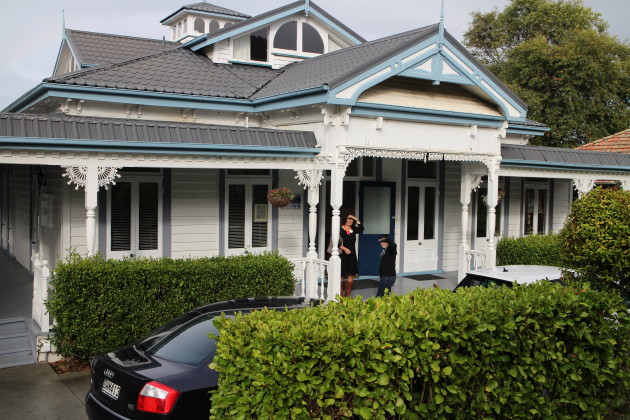Alwyn Poole
Founded and was the head of Mt Hobson Middle School in Auckland for 18 years. MH Academy is now an in person private school for Years 11–13. There is now a nationwide online provision called Mt Hobson Academy Connected for Years 1–13.
(In The Post and The Waikato Times: https://www.waikatotimes.co.nz/nz-news/350279945/charter-schools-where-kids-can-thrive-and-teachers-love-teaching)
Alwyn Poole is an education consultant and commentator, who founded and operated two charter schools.
OPINION: In New Zealand we have approximately 460 high schools. The gaps between the schools that produce the best results for students and those at the other end of the spectrum are enormous.
In terms of the data for their leavers, the top 30 schools have an average of 87% of their students leaving school with university entrance (UE). This includes two outstanding schools for Maori, in St Joseph’s Maori Girls and Manukura. Both these schools are superbly led and also approach things a bit differently to the norm.
The 30 schools at the bottom of the UE-for-leavers scale have just 2.7% of their students having that qualification.
These gaps are evident throughout the NCEA levels, and also for other measures such as attendance, retention until 17 years old, transition into post-school study/apprenticeships – and subsequent earning.
When the term 4 2023 attendance data was released, some celebrated a very modest improvement that pushed the percentage of students fully attending (nine days out of 10) above 53%. Many commentators overlooked that for Maori the full attendance percentage was just 39.8%, and for Pasifika was 36.8%.
Many of the students who are failing in our schools are doing so because of the nature of the provision. As principals told the Pisa researchers, it is difficult to get enough teachers, high-quality teachers, and teachers in specialised subjects in many of our schools.
The Education Hub has just released a report that found that 60% of principals stated that their newly graduated teachers are ill-prepared to teach, including in areas such as classroom management and content knowledge.
In many of the poorly performing schools, student behaviour is poor and bullying frequent. I have heard it said many times that some teachers do not mind students being habitually absent as those missing are often highly problematic when they are at school.
Some of those schools in the bottom 30 have been failing for 40 years. I know – I went to one of them and somehow scraped through and escaped. Expectations in many of these schools are low or non-existent.
In many school situations, it is not that the curriculum is too challenging. It is often lacking in depth and is boring – leading to disengagement, writes Alwyn Poole.
STUFF / STUFF
When asked about this, a South Auckland deputy principal informed visitors that “NCEA did not show their students in a good light”. Others discuss success as being whatever a student defines success as.
It is this form of discrimination against the students that leads to situations such as a report showing that one NZ university took just a single decile 1 student into its engineering course over five years.
In many school situations, it is not that the curriculum is too challenging. It is often lacking in depth and is boring – leading to disengagement.
When the Education Review Office (ERO) first came into one of the charter schools I set up in the last round, they asked the children (decile 1 and over 90% Maori or Pasifika) what they were enjoying.
The year 7s were studying architecture at the time and informed the ERO people that they “loved learning about famous things and how challenging the work is”. When media, and other visitors, came into the school they often commented as to how engaged the children were – to the extent that they barely looked up from their work.
As a charter school (i.e., up until 2018 when the then government scrapped them), 88% of the students who left that school at the end of year 10 went on to get their NCEA level 1 the following year.
The things that can be done differently in a charter school to engage students and begin to ensure genuine success are multiple and this provision is based on the bulk funding aspect. The teachers’ union the PPTA has always fought against bulk funding in New Zealand schools, so it was highly ironic that former PPTA president (and now former MP) Angela Roberts attributed the success of the charter schools to that form of funding.
The charter schools were started on approximately 4% of a state school set-up but many were able to negotiate good leases and therefore free up funds to have small classes (15 in the model I designed), pay teachers above the collective contract (with benefits such as health and life insurance), and provide all uniform, stationery and IT for free (which any state school could choose to do, but few do).
The charter schools needed to report to the minister every quarter and, like the new ones will be, had achievement targets (although I hope in the new round those targets will be much better thought through).
True to form, the first response of the PPTA to the new charter school announcement was to have Dunedin and Queenstown teachers take an afternoon off in protest and deprive their students of two hours of learning.
They have stated that the $150 million over four years that Associate Education Minister David Seymour announced would be better spent in the state system. That works out at just over $14,000 per New Zealand school per year. Will that create the huge difference in those schools that children and families are yearning for?
Many students need the different forms of provision charter schools will be offering. Fifty of these schools will be a very good start and teachers will love working in them.
Alwyn Poole
Innovative Education Consultants
www.innovativeeducation.co.nz
alwynpoole.substack.com
www.linkedin.com/in/alwyn-poole-16b02151/
www.wood2water.co.nz
www.russellinfo.co.nz

